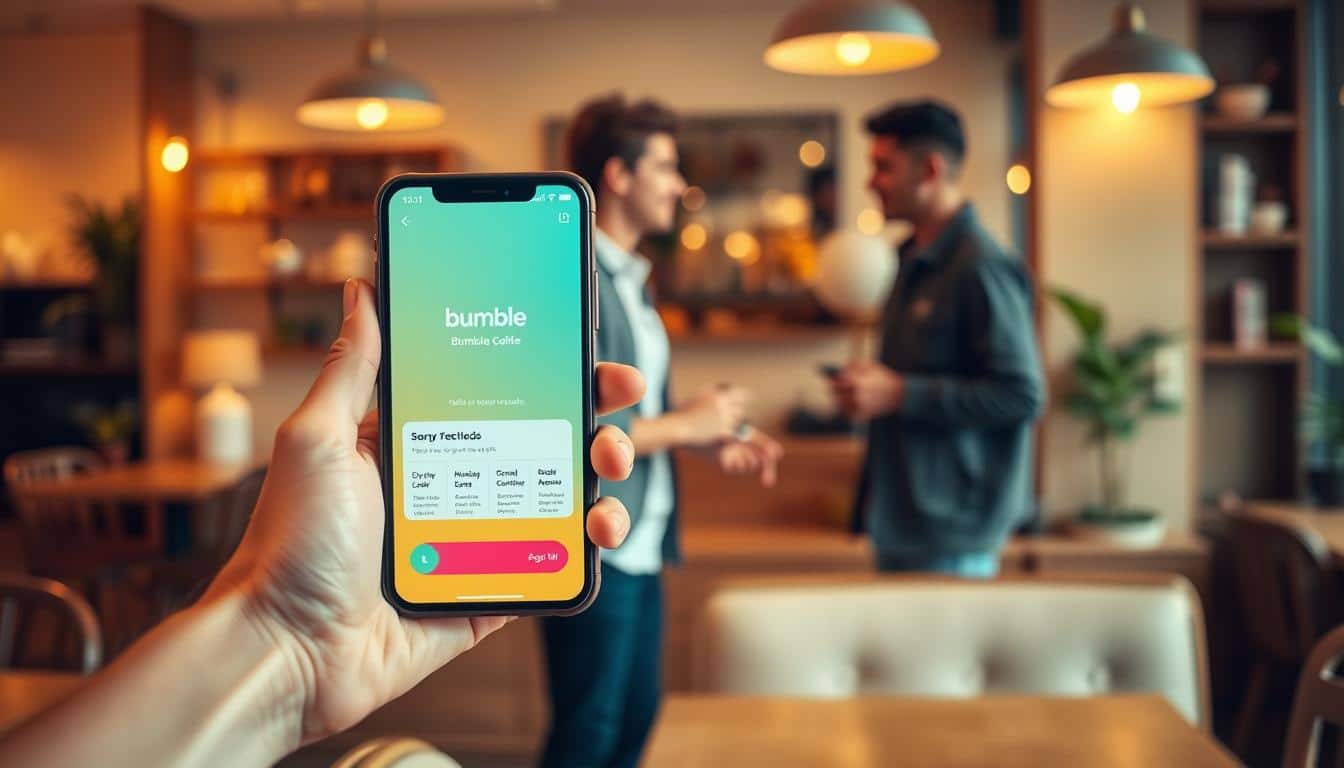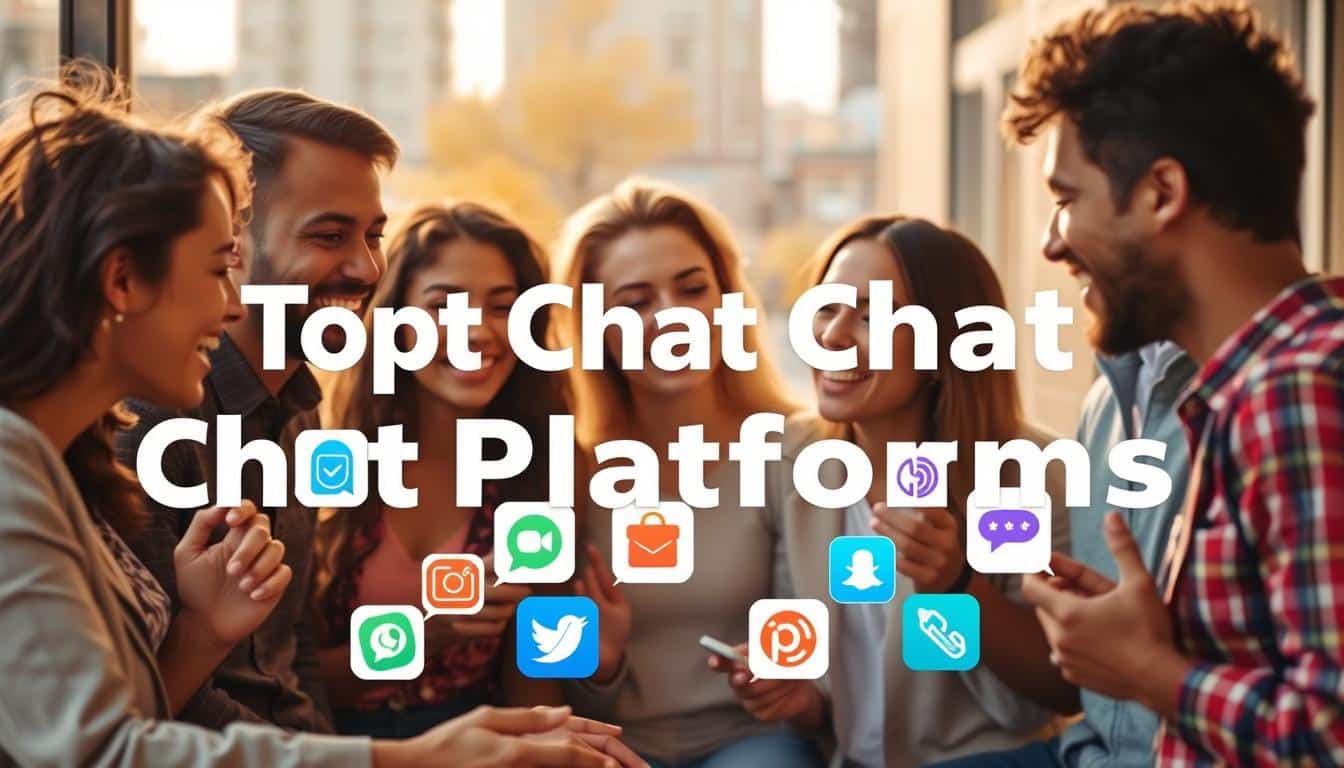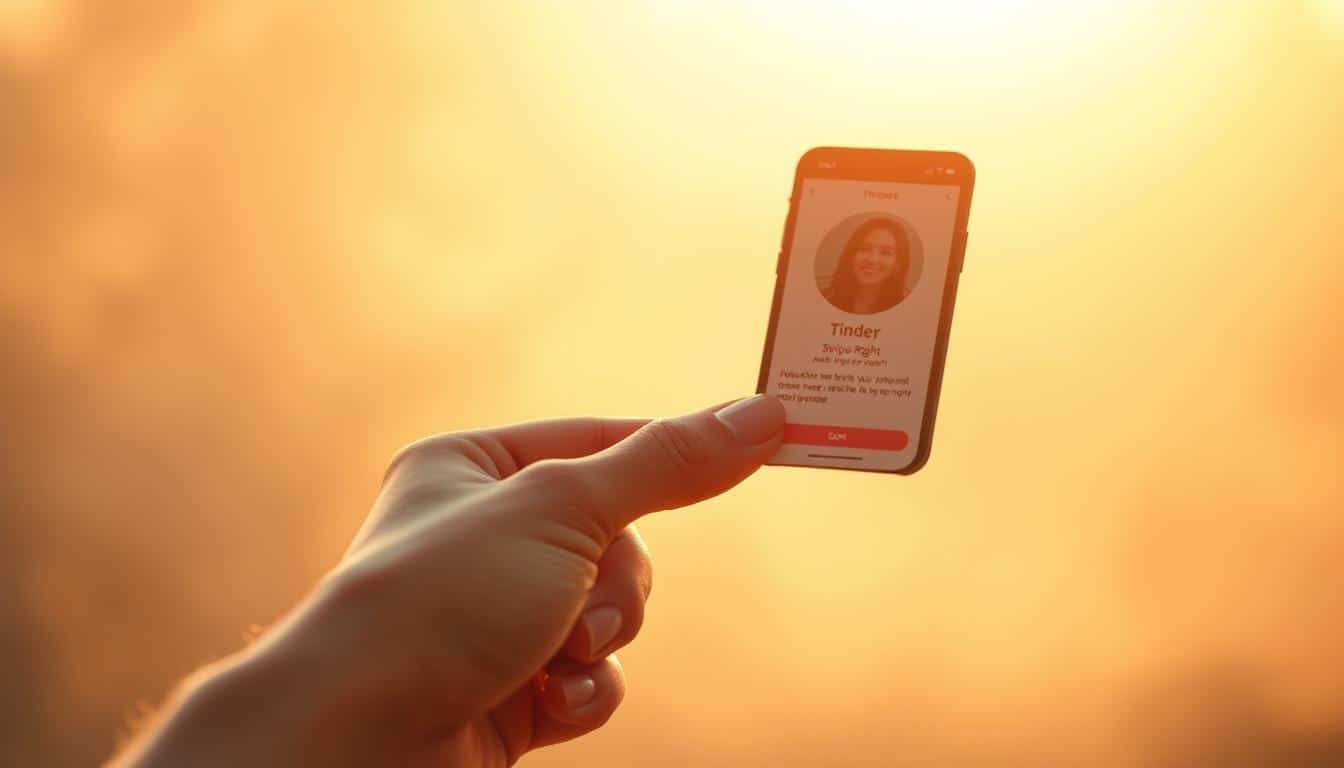Anúncios
How do you react to a match?
Dating apps have transformed the way many Americans meet and connect. Platforms like Tinder, Bumble, Hinge, OkCupid, Match.com, and eHarmony are widely used. They help people find long-term relationships and casual connections.
The aim of this article is straightforward: to highlight the benefits of dating apps. These benefits include convenience, compatibility, safety, niche options, cost, and actual success stories. It’s especially useful for busy professionals, those new to dating, people within specific communities, and anyone looking to enhance their love life with more control and better matches.
We’ll explore the popularity of dating apps and how they save time through mobile access and smart matching. You’ll learn about safety features that protect users, niche apps catering to specific interests, the value of subscriptions, tips for improved communication, and success stories supported by research. For more insights, check out the Pew Research Center reports on online dating trends, academic research on matching effectiveness, and data from major dating platforms.
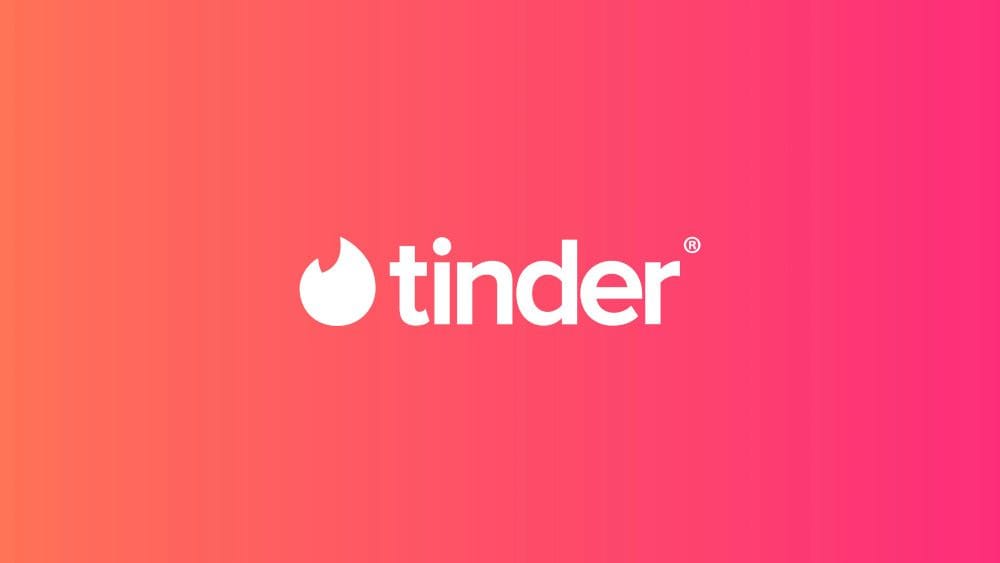
Tinder
Key Takeaways
- Dating apps USA offer clear benefits for modern singles seeking efficiency and choice.
- Major platforms like Tinder, Bumble, and Hinge illustrate the broad market and options.
- Online dating benefits include better matching, convenience, and niche communities.
- Safety tools and smart algorithms improve the chance to find compatible partners.
- Readers can use this guide to weigh dating app advantages and improve love life outcomes.
Why dating apps are popular in the United States
Americans now see online romance as a normal way to meet. The Pew Research Center says most people find it okay. Smartphones and social media like Instagram and TikTok make online meetings common, boosting dating app use.
Match Group and Bumble have millions of users. Media stories and celebrities also help make these apps popular. This shows digital dating is now a part of daily life.
Changing social norms
Meeting online is not seen as odd anymore. Young people started this trend, and now older ones are joining in. Video chats and texts became normal during COVID-19, making virtual dates popular.
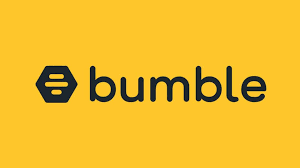
Bumble
Demographic trends
Most users are 18–34, but those 35–54 are catching up. Tinder is big with the youth. Bumble is popular among women because they message first. Big cities use apps more, but small towns are starting to catch up.
How lifestyle and work patterns drive adoption
Busy lives leave little time for meeting people the old-fashioned way. Apps help by letting you message anytime and search easily. They are great for those balancing work and personal life.
Remote work has made dating apps even more convenient. Users like being able to have video chats whenever. They say apps save time, showing why online dating is still growing in the USA.
| Factor | Effect on Use | Example |
|---|---|---|
| Social acceptance | Higher sign-ups and mainstream presence | Pew Research: majority accept online dating |
| Age groups | 18–34 highest; 35–54 growing | Tinder popular with young adults; Bumble attracts more women |
| Geography | Urban adoption leads, rural rising | City users show higher engagement than small towns |
| Work patterns | Less free time; demand for asynchronous contact | Remote work allows flexible virtual dates |
| Industry data | Large monthly active user bases and session time | Match Group and Bumble reports |
Convenience and accessibility for modern singles
Dating on the go fits modern lifestyles well. The mobile-first design helps users look at profiles, chat, and plan dates from anywhere. Whether you’re in a coffee shop, on a train, or taking a work break, you can connect easily. App data from places like Tinder and Bumble show people use the app in short, frequent visits. This proves how these apps fit into our busy lives, making it easier to meet new people.
For many singles, time is scarce. Dating apps offer smart features that make finding someone faster. They let you filter by age, location, and interests to skip profiles you won’t like. Swiping mechanics make choosing faster. With curated suggestions and clever prompts, the app points you towards good matches, saving you from aimless searching.
Match anytime, anywhere with mobile access
Mobile dating lets you turn every moment into a chance to connect. You get alerts for new messages and matches. In-app messaging means you don’t have to wait on emails or calls. Being always reachable, you can keep conversations going. This makes planning face-to-face meetings much quicker.
Time-saving features: filters, swipes, and curated matches
Modern dating apps rely on filters and swipes. Tinder made swiping famous for making fast choices. OkCupid and Match use detailed filters for a thorough search. Hinge provides suggestions and prompts based on shared interests. These app features help you avoid wasting time on the wrong profiles.
Integrations with social media and calendars
Social media integration makes dating profiles more real. Adding Instagram or Spotify shares your photos and music taste. Hinge and Bumble use these features to help express who you are. Calendar syncing and scheduling tools cut down on the back-and-forth of planning. Video calls allow for first dates to be online if needed.
Improving accessibility is important too. Apps are including options for larger text, screen-reader compatibility, and support in many languages. This helps everyone in the U.S. to use the apps, making the dating pool bigger and more inclusive.
| Feature | How it helps | Example apps |
|---|---|---|
| Filters and swipes | Speeds up discovery by narrowing choices and enabling quick decisions | Tinder, OkCupid, Match |
| Curated matches | Prioritizes compatible profiles to save time | Hinge, Match |
| Social integration dating | Adds authenticity and richer profiles using Instagram or Spotify | Hinge, Bumble |
| Calendar and scheduling | Reduces planning friction by syncing availability and booking dates | Bumble, Google Calendar integrations |
| Accessibility features | Supports users with disabilities and non-English speakers | Platform-wide updates across major apps |
Check out the benefits of using dating apps
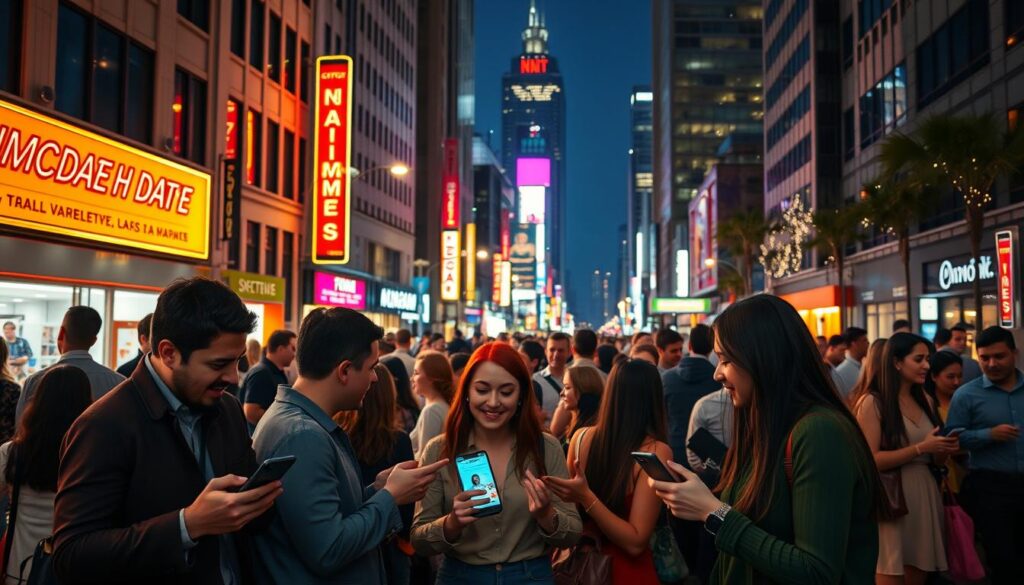
Dating apps make meeting people faster. They let you message, match, and plan dates quickly. Stats from Tinder and Bumble show they’re busy and effective. This means singles save time and get better results.
These apps cut out awkward small talk, letting you focus on shared interests. No more waiting to meet someone randomly. They save time and make dating more purposeful.
Apps offer a huge choice of potential dates, from local to long-distance. With filters and search tools, you can easily find someone who shares your hobbies and values.
Filters let you control who you see based on your preferences. Whether it’s religion or politics, sites like Match.com and OkCupid make it easy to find a good match.
Online screening helps you spot dealbreakers before a date. Profiles and prompts offer clues to someone’s lifestyle. Platforms like Christian Mingle and OkCupid show what really matters to users.
Early screening means you can focus on people who are right for you. It’s simple to decline matches that don’t fit, reducing stress. This approach leads to smarter dating choices.
Improved compatibility through smart matching algorithms
Smart matching combines your stated wants with your actions on an app. It looks at things like age and how far away someone is, plus how you swipe, chat, and spend time on profiles. This combines to help find partners who match both your clear and hidden preferences.
Different big names in dating use various ways to fine-tune matches. Hinge uses responses to prompts and how you interact. OkCupid asks lots of questions. And eHarmony goes deep with personality tests and a compatibility matrix. They all create scores to sort the best potential partners for you.
Personal quizzes and tags about interests help you discover others. Many dating apps use quizzes similar to Myers-Briggs, or simple likes and dislikes quizzes. They add tags for interests, shared answers, and how well you match percentage-wise. This lets you see quickly how your values, lifestyles, and objectives line up.
Studies on these algorithms show some good and bad but generally look promising. Research finds that sites aiming for long-term relationships often make better matches and reduce search time. Though no system is perfect, having a compatibility score seems to help find lasting connections.
To get the best results, fill out your profile fully and answer quizzes with honesty. This lets the matching systems use accurate data. Think carefully about the filters you use and adjust how you swipe if needed. Think of these tech suggestions as helpers that are most effective when you also use your judgment.
| Platform | Primary method | Notable feature |
|---|---|---|
| Hinge | Interaction signals and prompts | Focus on conversation starters to boost engagement |
| OkCupid | Extensive questionnaires | Detailed questions that feed compatibility scoring |
| eHarmony | Long-form personality assessment | Compatibility matrix designed for long-term matches |
| Bumble | Profile prompts and user choices | Women-first messaging and interest tags for filters |
Safety features and how to protect yourself online
Dating apps help us meet new people. But, it’s crucial to stay safe while using them. This guide offers tips and tools for a safer online dating experience. Follow these guidelines to protect yourself and enjoy meeting new friends or potential partners.
Profile verification and identity checks
Apps like Bumble and Tinder use photo and selfie matches to prevent fake profiles. They’re also exploring ID checks and other ways to confirm who you’re talking to is real. These steps help build trust while keeping personal information private.
Privacy settings, blocking, and reporting tools
You can manage who sees your profile and hide personal details on most dating apps. Unlinking social accounts protects your privacy further. Quick block and report options help you stop unwanted contact and alert the app’s team to issues.
Best practices for meeting safely in person
Always meet in public places for the first time. Let someone know where you’ll be. Arranging your own transport and keeping conversations in the app helps too. A video call can give you a better sense of someone before meeting.
Think about using background checks for extra peace of mind. Apps have safety features and emergency contacts for urgent situations. They’re working with safety groups to improve responses to any problems that happen.
| Feature | What it does | When to use |
|---|---|---|
| Photo verification | Matches selfies to profile photos to confirm identity | Enable at sign-up to reduce fake profiles |
| Government ID check | Compares ID documents to user identity for stronger verification | Use for higher-trust interactions or premium features |
| Location hiding | Keeps exact location private while allowing general distance | Turn on when you prefer extra online dating privacy |
| Blocking | Stops a user from contacting you and removes them from view | Use immediately if someone makes you uncomfortable |
| Reporting tools | Uploads messages and profiles to moderation for review | Report harassment, scams, or suspicious behavior |
| Video dates | Allows live interaction before meeting in person | Use as a screening step to verify behavior and chemistry |
Despite efforts, incidents can still happen. Using dating app safety features and following these tips can help. Together, they offer a better chance at a safe, fun dating experience.
Variety of niche apps for specific interests and communities
People use niche dating apps to find partners with similar beliefs, habits, or hobbies. These apps help users meet someone who lives like them. They make it quick to find matches by focusing on what users have in common.
Apps for religious, cultural, or lifestyle preferences
Apps like Christian Mingle, JSwipe, and Muzmatch help users find partners who share their faith. For lifestyle choices, there’s FarmersOnly for country folks and Veggly for those who don’t eat meat. This way, it’s easier to talk about important beliefs and daily habits.
Options for LGBTQ+ communities and inclusive platforms
LGBTQ apps such as Grindr and HER are made for queer and trans people, with features for safety and community. Bumble and Tinder also support inclusivity with more gender options and pronouns. These features help everyone feel welcome and safe to be themselves.
Local vs. global apps: choosing the right scope
Local apps like Hinge and Tinder help find people close by for serious relationships. They focus on who’s nearby and compatible for daily life. But global options like Tinder Passport and OkCupid’s city filters are great for meeting people worldwide, whether for moving or travel.
Mixing niche and mainstream apps can give more choices without losing focus. People often use one app for specific community dating and another for broader searches. This strategy helps find more relevant matches and starts conversations on common ground.
Cost, subscriptions, and value for money
Picking a dating app is more than just about matches. It’s vital to consider features, price, and the outcomes you want. Finding the right mix of free use and paid features affects both your experience and how much you spend.
Free features vs. premium subscriptions
Many apps start with a free version. You can set up your profile, swipe, send a limited number of likes, and chat with matches without paying. Tinder, Bumble, and Hinge offer these basic services to try out their platforms.
Upgrading to a paid subscription brings benefits like no cap on likes, more search options, message read notifications, and getting your profile to appear more. Plans like Tinder Plus/Gold, Bumble Boost, and Hinge Preferred are examples. These features improve your profile’s visibility and let you choose who sees you.
Weighing pay-to-win features and whether they help
Paying for features can make you more noticeable. Short-term, boosts and better placement can get you more matches. But, the quality of your connections still depends on your photos, what you write, and how you message.
See premium features as boosters, not magic solutions. Even with paid features, a weak profile means more swipes but not better chats. Putting effort into a great profile usually works out better than just relying on premium options.
How to test apps without overspending
Begin with the app’s free version. Make your photos, bio, and conversation starters the best they can be. Try out subscriptions or features for a short time to see if they make a difference. Keep track of your matches and meaningful chats to decide if an app is worth the cost.
Subscriptions usually range from $10 to $40 a month. Single-use features like Boosts or Super Likes are often a few dollars. Look for deals like student discounts or seasonal promotions to save on costs.
Consider trying a premium plan for a month. Cancel auto-renew if it’s not worth it. Pay attention to how it changes your match rate before you choose a longer plan. This way, you control your spending and see which features really help.
Improving communication skills and dating confidence
Turning matches into meetings is all about good messaging. Keep it short and thoughtful. Practice makes perfect, especially with conversation starters and messaging etiquette. Be curious, polite, and tailor your messages to the other person’s profile.
Practice openers that spark real replies
Openers should come from shared interests or something in their profile. Questions like, “What part of your trip was the most memorable?” or “Which book should I read next?” are great. They invite stories in a no-pressure way.
If a chat slows, following up shows you’re still interested. But, if they don’t reply, respect their space.
Polish messaging etiquette dating apps
Matching the other person’s tone and pace is key. Emojis add warmth without words. Don’t share too much too soon. And if you’re ending the conversation, be kind, don’t just disappear.
Watch when you message. Avoid late nights or long texts. Simple questions or check-ins are less overwhelming and keep things moving smoothly.
Use apps to refine what you want
Conversations help you figure out what you like. Look for humor or curiosity. Have a list of what’s important to you. Update your filters to find better matches.
Experiment with your profile to see what works. Ask friends or maybe a dating coach to help polish your approach.
Simple steps to take chemistry from screen to street
Start with texts to build a connection. Then, try calling or video chat in a few days. It helps to ease anxiety and gives a sense of the person’s speaking style.
First meetings should be safe and short. Opt for a walk or visit a museum. Treat these early dates as ways to learn. Keep your expectations in check and focus on finding out if you’re comfortable together.
Avoid common communication pitfalls
Don’t text too much before you meet. Stay away from heavy topics at first. Don’t share too much personal info early. If you’re losing interest, send a polite message to close things off. Clear communication can boost confidence and make dating healthier.
| Stage | Action | Why it works |
|---|---|---|
| First message | Reference a profile detail and ask an open question | Shows attention and invites a story |
| Early chat | Match tone, keep messages concise | Builds rapport without overwhelming |
| Pre-meet | Move to a call or video within days | Confirms chemistry and reduces uncertainty |
| First date | Choose a public, short activity | Offers low pressure and shared focus |
| Follow-up | Send a clear, honest message about interest | Creates respect and builds dating confidence |
Success stories and real-world outcomes from dating apps
Stories from The New York Times and The Washington Post reveal successful relationships from dating apps. These range from long marriages to solid partnerships. Many accounts highlight shared values, open early talks, and meeting locally as keys to lasting love.

Research from the Pew Research Center and scholarly studies provide data on dating app relationships. They show a rise in couples meeting online, especially among younger adults. Now, a significant part of new unions and marriages start on the internet.
These apps also pave the way for friendships and local group connections. Features like those on Bumble BFF and Hinge promote social networking, travel companions, and activities based meetups. This boosts social bonding.
The success of these connections often hinges on user effort and profile completeness. Those with detailed profiles and clear goals, who choose matches wisely, usually enjoy better outcomes. The choice between apps geared towards serious relationships or casual dates makes a big difference too.
Being truthful in bios, replying quickly, and opting for safe meetups are common factors in success. These practices are mentioned often in happy stories and in studies that examine lasting pairings.
Not all attempts lead to marriage, and it’s normal to go through temporary connections. Staying persistent, learning from past dates, and fine-tuning your approach can improve your chances. This way, relationship success rates on apps can increase over time.
Conclusion
Dating apps offer big pluses: easy use for busy folks, smart matching, safer dates, and apps for every hobby. They show how you can find better matches quickly. This is thanks to mobile use, search filters, and compatibility tests.
To start, pick a popular app like Tinder or Hinge, plus one that matches your hobbies. Make your profile stand out with good photos and interesting answers. Turn on safety features and try a premium option to see its benefits. Following these tips can help you find good matches.
Set real goals: answer compatibility questions and message a few new people each week. These steps show dating apps can improve your confidence and how you talk to others if you use them right and safely. For more info, check out reports by Pew Research Center and safety tips from Tinder Safety Center, Bumble Safety, and Hinge Help. Academic studies on dating online can also offer insights.







